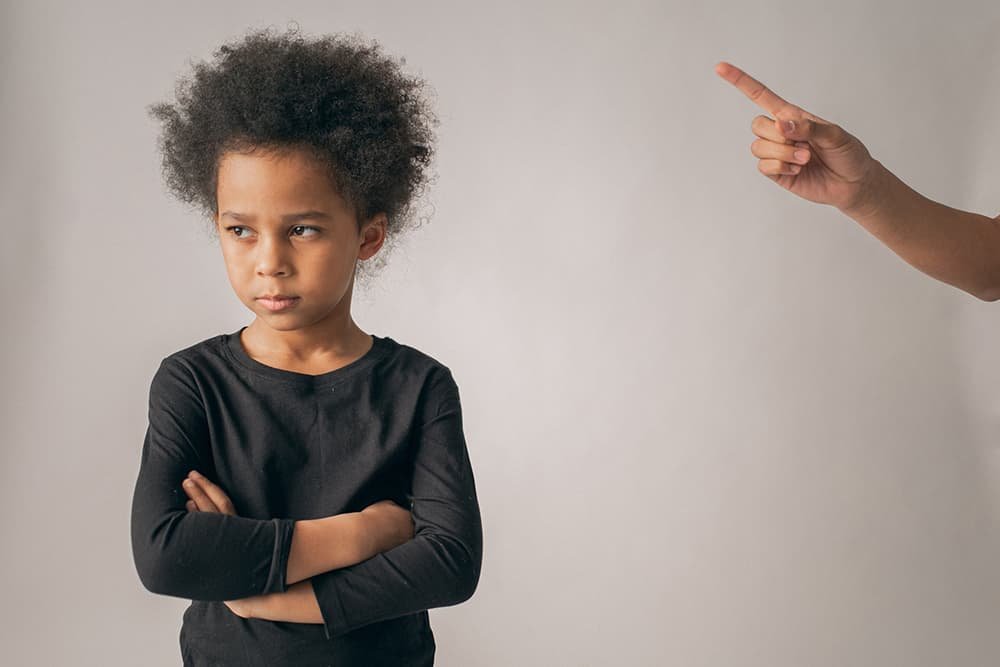6 effective positive discipline techniques to try today
In recent generations, positive discipline has sailed to the forefront of many parents’ approach to raising their children. Positive discipline offers a respectful, encouraging method more in line with how many adults view children and what will help them grow into responsible, empathetic, and socially competent people.
Are you interested in positive discipline but not sure where to start? We’ve gathered 6 effective positive discipline techniques you can try right away.
If you are a caregiver, always discuss introducing any new discipline methods with the family you’re working for to make sure you are aligned. This is a great opportunity to start a conversation around your ideas, and to show how you are investing in furthering your skillset and in their child’s growth. You want to make sure they are on board, too.
What is positive discipline for children?
The basis in positive discipline for kids is always mutual respect. Yes, you as the adult will make some decisions and what you say goes, but any positive discipline always assumes that both you and the child are human beings with integrity and the right to your thoughts and feelings.
Positive discipline is about setting boundaries, helping to guide a child into a world where we have to abide by certain rules and behaviors to function in society, and to keep our friends.
Positive discipline can be contrasted against methods of discipline that are more punitive in nature, where what the adult says goes and is not to be questioned, and where there is a punishment to follow if the rules are not obeyed. This is a method that many leading childcare experts say teaches children to follow rules or do anything only as a way to avoid punishment. It doesn’t translate as the child grows up, has more freedom, and needs to be able to make their own choices.
6 positive discipline techniques to try
Revise the timeout. Old-school timeouts tell children that their emotions are bad, and that the adults want to make them invisible, non-existent while they feel them. Instead, create a positive timeout as a time for the child to handle and process their emotions. Dedicate a cozy time-out space where they can go. You can also remain nearby, but give them space to work on their feelings, so they know they are not alone.
After the timeout is over, always come back together, talk through what happened, how the child felt, and anything they want to process about it. It’s okay for you to explain that their behavior was not okay, even if their feelings were. Use timeouts only with children who are old enough to understand what the space and time are for and who can talk it out with you.Reward positive behavior. It’s hard to remember this in the middle of a disaster, when your head is full of “No, no, no!”, but discipline isn’t all about how to get children to stop doing something. By rewarding and encouraging positive behavior anytime you see it, you help build that muscle in your child or charge. They’ll start to feel good every time they do that behavior, and it will make them want to do it more.
Redirect attention. Sometimes a behavior is too intense to process and talk about in the moment. A two-year-old in the middle of a tantrum doesn’t want to think about why they’re doing something—and they don’t have the physical capacity to do it either. In these moments, try to redirect the child’s attention away from the behavior, trigger, or situation that is causing the unwanted behavior and encourage them to do something more positive. This will give them a much-needed break, too, and give you both the chance for a more joyous moment.
Offer choices. A very large part or positive discipline is encouraging kids to take responsibility for themselves and adapting it to how much they can handle at any given age. Two- and three-year-olds particularly are very much working through controlling situations and making their own decisions, but if left entirely to their own devices, they’d go around half dressed and eating ice cream all day. Find the happy medium: instead of telling them exactly all the things they have to wear, give the child a choice between this shirt or that one. Explain that there will be vegetables on their plate but they can choose peas or carrots.
By offering choices, you give them some power and control over their situation, and help them learn what’s reasonable for the day. As your kid ages, they can be empowered to pick their whole outfit, or decide what goes in the backpack for school, or any number of things that will bolster their pride and help them be responsible for their day.Let the child be involved in solutions. This method is especially useful in older children. If there is a conflict, a scheduling issue, different opinions, or if the kids’ desires go against the boundaries you’ve set up, let them problem-solve the situation.
Say, “Okay, now we have this problem where I say we have to do this and you want this, what should we do about it?” Brainstorm different ways you can both get sort of what you want, see if there’s a compromise, or maybe if you do the thing you have to do first, then you can get to do the thing they want after. This makes the kid feel involved and important, while their needs and wishes are also respected. It also helps them understand why they can’t get something that they want, and that it isn’t just because you’re a meanie and no one cares about them.Breed empathy. One of the most efficient positive disciplining techniques is natural consequences, and this is clear in social interactions and friends. Adults are often overly accommodating to kids, but friends of the same age won’t be. By letting a kid’s actions have consequences, they’ll quickly learn that it’s not worth it to always try to get your way, take toys from others, etc.
Take the extra step to show the child how their actions affect other kids. Talk about everyone’s feelings as a result of the behavior. Not only will your child realize that they stand to lose friends by behaving this way, but they will also build their empathy skills by learning the feelings and reactions that go on inside others.
Build positive skills in the child—for life
The long term goal of positive discipline is to teach children about their emotions. It’s okay to feel angry, sad, disappointed, or hurt (and also to feel very, very excited!), but being a part of society means being able to feel those feelings and still reacting in a more positive way.
By understanding and handling their emotions, children are able to build resilient, positive bonds with their friends and family members and work through issues in a relationship when they come up. It also builds their self-esteem and ability to problem-solve.
Adjust your discipline as the child grows
It’s important to always adapt any discipline techniques to the child’s age. An older child will be able to think and talk about their emotions and reactions in a more complex way, so that you can take a small break and return to the activity. A small child in the middle of a tantrum may not have the capacity to process emotions or consequences at all in the moment, and it’s best to simply both leave the situation and do something else - or maybe take the time for a snuggle and a good book, instead.
What’s your experience with positive discipline? Have you learned any tricks that really worked for your family or the family you work for? Tell us all about it on our Instagram or Facebook!


